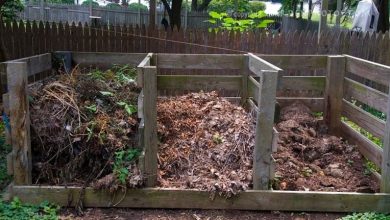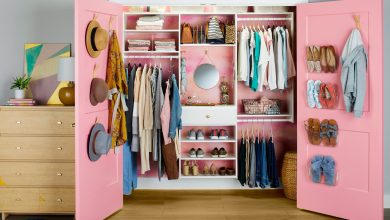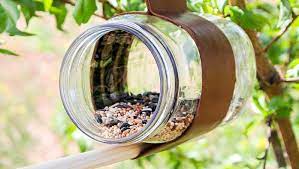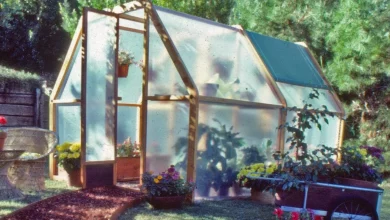How to Choose and Install DIY Flooring
Diy flooring ideas
When considering a DIY flooring project, there are several options to choose from depending on your budget, the look and feel you want for your space, and the level of DIY experience and skills you have. Some of the most popular and accessible options for DIY flooring include laminate, vinyl/linoleum, wood, tile, and carpeting.
Laminate flooring
Laminate flooring is one of the most affordable and easiest DIY flooring options. It is designed to look like real hardwood but is more durable and waterproof. Laminate boards “click” together using a tongue and groove locking system so they can be installed without nails or adhesive. The planks simply snap into place row by row. This makes laminate a great choice for beginners. Most laminate floors have a 25-year residential warranty and are very scratch, stain, and water resistant. They come in a variety of wood grain and tile patterns to suit any style.
Vinyl/linoleum flooring
Vinyl flooring (sometimes called luxury vinyl tile or LVT) is durable, waterproof, and maintenance-free. It is ideal for high-traffic areas like kitchens. Vinyl comes in sheet form like linoleum but has more realistic wood, stone, or tile visuals. Although it does not require any adhesive, the sheets are heavier and slightly more challenging for a beginner to install compared to laminate. Vinyl/linoleum holds up well over time with easy cleanup of dirt, spills, and scuffs.
Wood flooring
Real hardwood provides a classical, premium look and feel. However, it requires more preparation, tools, and skills to lay compared to laminate or vinyl. Raw wood needs sanding and sealing. Nailed installation leaves the boards susceptible to dents and dings over time unless a floating floor system is used. Wood also requires ongoing care, like sweeping, washing, and resealing or varnishing. But with the right preparation, hardwood provides a timeless natural appearance and aging character over decades.
Tile flooring
Tile comes in ceramic, porcelain, and natural stone varieties. It is very durable but requires adhesive, grout, and more hand skills for cuts and adjustments. Design layout must also be carefully planned which makes large tile floors challenging for novices. However, tile is heat-resistant, waterproof, and works well in high-moisture areas like bathrooms and kitchens. With proper sealing and grout maintenance, it can last a lifetime with basic sweeping and washing.
Carpeting
Carpet provides comfort underfoot and comes in many thick textures and colors. However, it requires more installation tools and skills with carpet seaming. The carpet is also not suitable for areas that get wet, like bathrooms. It needs frequent vacuuming to remove dirt and allergens from fibers. With regular cleaning, carpet can last 10-15 years before replacement may be needed.
Cheap DIY flooring
When considering price, laminate, and vinyl are generally the most affordable DIY flooring options. However, there are also some additional low-cost alternatives to explore:
- Cork flooring: Natural cork planks are sustainable, comfortable, odor-resistant, and provide warmth underfoot. Basic floating installation is relatively easy.
- Bamboo flooring: Not technically wood, bamboo grows quickly and provides many benefits similar to hardwood but at a lower cost. It can be nail-down or floating.
- Rubber flooring: Easy interlocking planks that are waterproof, slip-resistant, and sound-absorbing. Comes in natural and manufactured styles.
- Concrete sealers: Seal and polish an existing concrete subfloor for a modern industrial look at a very low cost.
- Area rugs: Rugs can refresh tired flooring, add color accents or be installed over subfloors temporarily at low upfront expense.
No matter the material, shopping sales, installation bundles, and purchasing materials in bulk when possible, it helps lower the overall DIY flooring budget.
DIY flooring wood
For a classic, natural look on a budget, wood makes an excellent DIY flooring choice with some planning. Here are some tips for installing wood flooring as a DIY project:
- Choose engineered wood over solid. Engineered wood has similar visuals but is more stable, less susceptible to damage, and easier to install as a floating floor without nails.
- Test for moisture. Use an accurate moisture meter to ensure the subfloor and wood planks will maintain the right moisture content for seamless performance.
- Acclimate materials. Allow plenty of time for the flooring to adjust to indoor environmental conditions before installation to avoid future gapping.
- Use the right tools. Procure a speed square, pull bar, tapping block and other tools designed for wood flooring for precision cuts and tight joints.
- Stagger planks. Offset rows by at least half a plank length for strength and visual appeal as the flooring spans the installation area.
- Leave expansion gaps. Leave small spacing at walls and any vertical obstructions for natural wood movement with temperature and humidity changes.
With some preparation and attention to detail, wood proves a very rewarding and durable DIY flooring material for those ready to take on the intermediate-level installation project. Sweep, wash, and recoat as needed to enjoy the rich patina over decades.
DIY flooring installation
Whether starting a laminate, vinyl, wood, or other type of DIY flooring project, careful planning and proper installation techniques are key to achieving great results. Here are some best practices to keep in mind:
- Prepare the subfloor. Sweep and make any needed repairs to have a clean, dry, flat base for the new flooring to lie evenly on top of.
- Lay out the pattern. Unroll or set out planks dry to visualize the design and mark any necessary cuts before permanently sticking or locking anything down.
- Use expansion gaps. Leave 1/2″ minimum space between flooring and all walls, thresholds or vertical obstructions to allow for seasonal movement.
- Install transition moldings as needed. Add trim pieces when transitioning between different flooring types or levels to avoid unsightly bumps.
- Start in a corner. Lay the starter row with grooves facing the wall to maintain straight runs using spacers to leave expansion gaps.
- Work in parallel rows. Continue piece by row snapping or tapping them tightly together while maintaining straight parallel lines and offsets as specified.
- Make meticulous cuts. Measure twice and cut once, accounting for tongue-and-groove. Use sharp utility knives or specialized flooring cutters for precision.
- Consider accessories. Choose underlayments, edge restraints, reducers, stair nose when needed to finish the floor properly.
With patience and attention paid to these details at each flooring seam, a beautifully installed DIY floor can result that stands the test of time.
FAQs
What is the cheapest and easiest flooring to install?
By far, the most affordable and simplest flooring option for DIY projects is laminate. Laminate planks can simply be laid floating row by row with basic tools and require no expensive adhesives or special skills. Laminate is also very durable and water-resistant, making it a versatile choice for most rooms. Vinyl/linoleum floors offer similar ease of installation but may cost more depending on the visuals chosen.
What type of flooring is easiest to maintain?
Vinyl/linoleum and laminate floors tend to be the lowest maintenance options. Spills, scuffs and dirt wipe up easily with a damp mop. Periodic sweeping or vacuuming is usually all that’s needed to keep them looking their best. Tile and hard surfaces like concrete are also very durable and can be cleaned with basic cleaning, though grout requires more specialized maintenance. The carpet needs regular vacuuming to avoid dirt buildup. Wood floors require more involved cleaning and periodic resealing or finishing.
What type of flooring does not scratch?
Vinyl and laminate floors are highly scratch-resistant due to their dense, non-porous surface that protects the visual layer. In general, hard flooring types like tile, stone, luxury vinyl, and engineered hardwood are less prone to retaining scratches compared to softer surfaces. However, all flooring can potentially scratch or dent with harsh abrasives or sharp furniture legs, so felt pads and mats help preserve any flooring type. Proper maintenance also prevents scratches from accumulating grit over time.
What type of flooring lasts the longest?
When installed correctly and with appropriate care, tile, stone, and solid hardwood floors can often last lifetimes, with renewal, refinishing, or resealing as their only major maintenance needs. Well-made luxury vinyl, laminate, and engineered wood floors also provide long-lasting performance, typically for 25-50 years under normal use before replacement may be needed. The carpet has a lifespan of 10-15 years on average, with regular vacuuming. Floors made from moisture-prone materials like real wood in wet areas will not stand the test of time as well without preventative measures. Proper installation and care extend the lifetime of any flooring considerably.
What type of flooring is best for bedrooms?
For bedrooms, comfort and low noise are important considerations in addition to durability and maintenance needs. Good options include carpet, laminate, luxury vinyl and certain types of engineered hardwood. Carpet provides warmth, cushioning and sound absorption ideal for relaxing spaces. However, laminate and vinyl scores highly as well for softer footsteps with water-resistance suitable for occasional spills. Bamboo could be a environmentally-friendly hard surface option combining resilience and natural aesthetics well suited to bedrooms too. Proper underlayment adds comfort dimensions to any flooring choice.



